
WheresCherie.COM
4395029 visitors since 07/2002
Cherie is currently in
the United States
Featured on:
Yahoo! Picks
&
USA Today
Register an account!
Registering for an account is quick, and registered
users can send messages to other users, post on message boards
rate stories, and are notified of site updates.
| poll |
| Where are you going next? |
logged users ::
active for last 5 minutes
Site created by
Raging Network Services
Logo by
Chris Barela
Cherie looks at Mars through the 60-inch telescope at the Mt. Wilson Observatory in Pasadena, California. *Photo by Norm. The antenna-farm on Mt. Wilson. This "Frankenstein-like" machine opens the hatch to the dome. Norm prepares the 60-inch scope. The 60-inch telescope completed in 1908 by George Hale was the largest telescope in the world at the time. *Photo by Norm. In 1917, Hale completed his 100-inch telescope on Mt. Wilson. *Photo by Norm. Inside the dome of the 60-inch scope. High technology? Cherie looking through the scope. *Photo by Norm. As the sun goes down, the lights of Los Angeles come to life. *Photo by Norm. Someone spilled sugar across the night sky. Star light, star bright first star I see tonight. The first planet we see is Jupiter. *Photo by Norm. Jupiter *Photo by NASA. A closer look at Jupiter. *Photo by NASA. Cherie bathed in the red dome lights. Those kinky astronomers! Astronomers call it: BETA CYGNI, more commonly known as Albiero, I renamed this star the "UCLA star" since it is blue and gold! Looking out into the night sky. The Mt. Wilson 60-inch telescope dome at night. Can you see "Cassiopeia" in the upper right hand corner of this photo? Norm takes a peek! The telescope at night. This blue blob is the "Blue Snowball Nebula" also called NGC7662. It is 4600 light-years-away. Our first sight of Mars in the wee hours of the morning. Mars, taken with my camera. Mars. *Photo by the USGS Astrology Team. The telescope's eyepeice. The dome. Aurora Borelis or "Northern Lights" captured on film. *Photo by Norm. The Aurora Borelis paints the sky red. *Photo by Norm. Will we ever be able to see to the edge of the universe? The 60-inch telescope. Saturn. *Photo by Norm. (Saturn won't be visible in the night sky for a few more months.) Saturn. *Photo from FP Software Lab. Saturn's rings. *Photo by NASA. (Note: color of rings was enhanced) Cherie looks into the night. Here comes the sun! Time to put the telescope to sleep. Look at the green spark! The 150-ft Solar Tower on Mt. Wilson, built in 1910. Today the solar tower is used by UCLA to take magnetic field measurements of the Sun. Edwin Hubble proved that the Universe is expanding with the Mt. Wilson 100-inch telescope. This was Hubble's locker. Back in 1904 when the Mt. Wilson Observatory was founded, this was high-tech. Click on each picture to see it full size.
read comments (0) |
write comment| views: 5715
| rated: 0.0
printer-friendly version
"If people only knew how hard I work to gain my mastery, it wouldn't seem so wonderful at all." -- Michelangelo Buonarroti
WheresCherie.COM Quote
310: California: Mt. Wilson--Is there anybody out there?
@ CherieSpotting
Aug 10 2005 - 17:31 PST
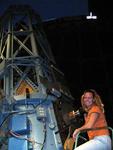
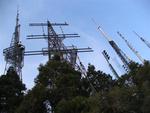
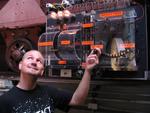
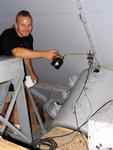
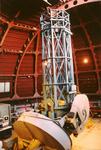
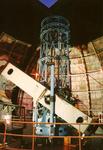
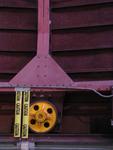
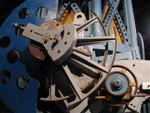
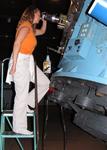
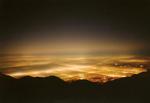
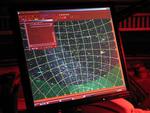
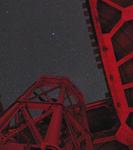
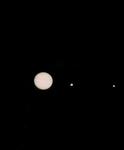
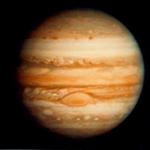
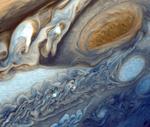
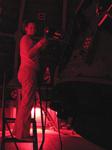
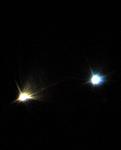
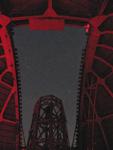
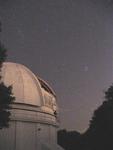
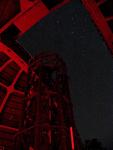
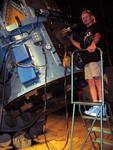
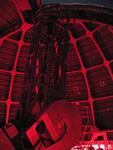
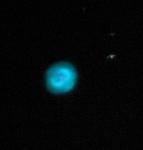
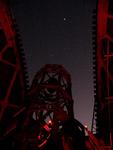
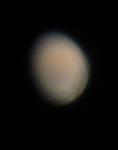
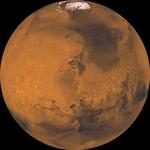
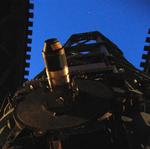
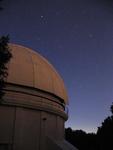
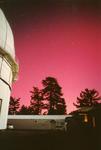
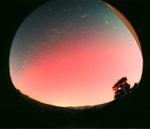
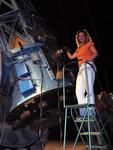
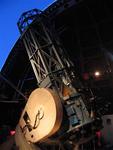
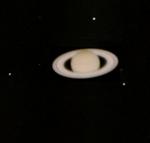
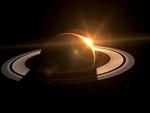
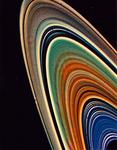
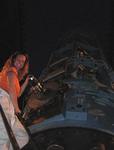
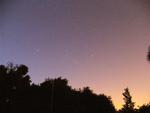
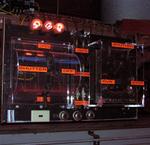
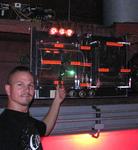
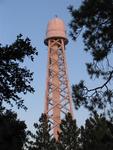
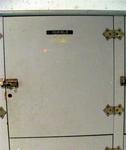
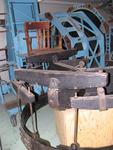
cherie writes: Many tourists come to LA to see stars, but not the kind that astronomers are interested in. At first the night seems like a blank dark emptiness. From the 60-inch telescope at Mt. Wilson, the sky comes to life at night. Another world was revealed once you pressed your eye to the scope.
The dome was quiet, a vacuum of sound, until someone looked through the eyepiece and gasped. The empty night was suddenly filled with stars, like some giant dusted the sky with sugar granules.
I went up to Mt. Wilson Observatory in the mountains above Pasadena, California to take a closer look at Mars. Mars is in the air tonight, and every night for the rest of the year (2005). NASA’s MRO (Mars Reconnaissance Orbiter) is scheduled to take off Aug 11th. The MRO will arrive at Mars in March 2006 with the hopes of learning more about Martian water. This water is predicted to hold clues to past or present Martian life.
My friend Norm Vargas is an amateur astronomer who works at the Mt. Wilson Observatory; Norm was my neighbor when I studied at UCLA.
Norm managed the 60-inch telescope at Mt. Wilson so that in one dark night we saw: double stars, planetary nebulas, globular clusters, and galaxies 2.4-million light-years away. We also saw Neptune, Uranus, Mars, the Blue Snowball Nebula, the Saturn Nebula, Albiero (re-named by me the UCLA star since it is blue and gold), the M32 Galaxy, and the G1 globular in the Andromeda Galaxy. Sadly, I didn’t see the Starship Enterprise.
I brought my sleeping bag and curled up next to the base of the telescope and rested between galaxy sightings. I’m not used to staying up all night unless there is a raging party involved. Norm would shake me and say something like: “Do you want to see the Cat’s Eye Nebula?”
“Does it just look like another white speck, or does it look different?” I would ask.
“It looks different. Wake up, you’ll like it,” Norm insisted. He was right.
At UCLA I took an astronomy course because I wanted to learn more about Black Holes. I wanted to learn the names of the 6,000 stars visible in the night’s sky. Or at least I wanted to know the names of the constellations in my hemisphere! Astronomy ended up just being another class in Calculus.
But at Mt. Wilson I learned the silly things I always wanted to know about outer space like what’s the difference between a meteor, asteroid and comet? I learned that a ‘globular cluster’ was a swarm of stars gravitationally bound to each other. Nebula is the Greek word for cloud, and describes a gas cloud in space. I learned about the Galilean moons of Jupiter and than my friend Norm Vargas has an asteroid named after him.
Norm and I went to Mt. Wilson on the new moon in August, the night with the darkest sky. Even thought Mt. Wilson is less than an hour from a city with a population of 10 million people (Los Angeles), it is still considered one of the best places to observe the night sky because of the low levels of atmospheric turbulence. This turbulence is what makes stars twinkle.
Astronomers want to leave twinkling stars to the nursery rhymes. Star gazers want a still and steady night so they can magnify the universe as much as possible. Many people talk about LA’s pollution, but astronomers worry about smog—they worry about light pollution. Even with the light of LA in the distance, Mt. Wilson is still a world-class star gazing location.
George Ellery Hale created the World’s Largest Telescope on Mt. Wilson in 1908 with his 60-inch telescope. That means the telescope’s mirror has a 5-foot diameter (60 inches!) The Mt. Wilson 60-inch telescope was the first scope to measure the size of the Milky Way and the earth’s position within our galaxy. Now Mt. Wilson rents the 60-inch scope to astronomy groups. Small groups (up to 25 people) can rent out the telescope at night for ($900/full night) and ($450/half night).
With telescopes, size matters. In 1917, Hale outdid himself and made a 100-inch telescope right next to his 60-inch scope. Hale’s 100-inch telescope was the World’s largest until 1948. Hale built the World’s Largest Telescope 4 times.
Using the 100-inch telescope on Mt. Wilson, Edwin Hubble proved that spiral nebulae are distant galaxies and his work led scientists to the current Big Bang Theory. Hubble also proved that the universe is expanding. (Quite fitting, whenever the Hubble Telescope--named for Edwin Hubble--takes a photo today, the universe gets bigger!)
We may never know how big the universe is. Even with the most advanced telescopes, how can you “see” the edge of the universe? Perhaps that is what makes the night sky forever interesting. In some ways, the universe will always keep some of her secrets.
For more information click on www.mtwilson.edu or www.mwoa.org

 RSS Feed
RSS Feed